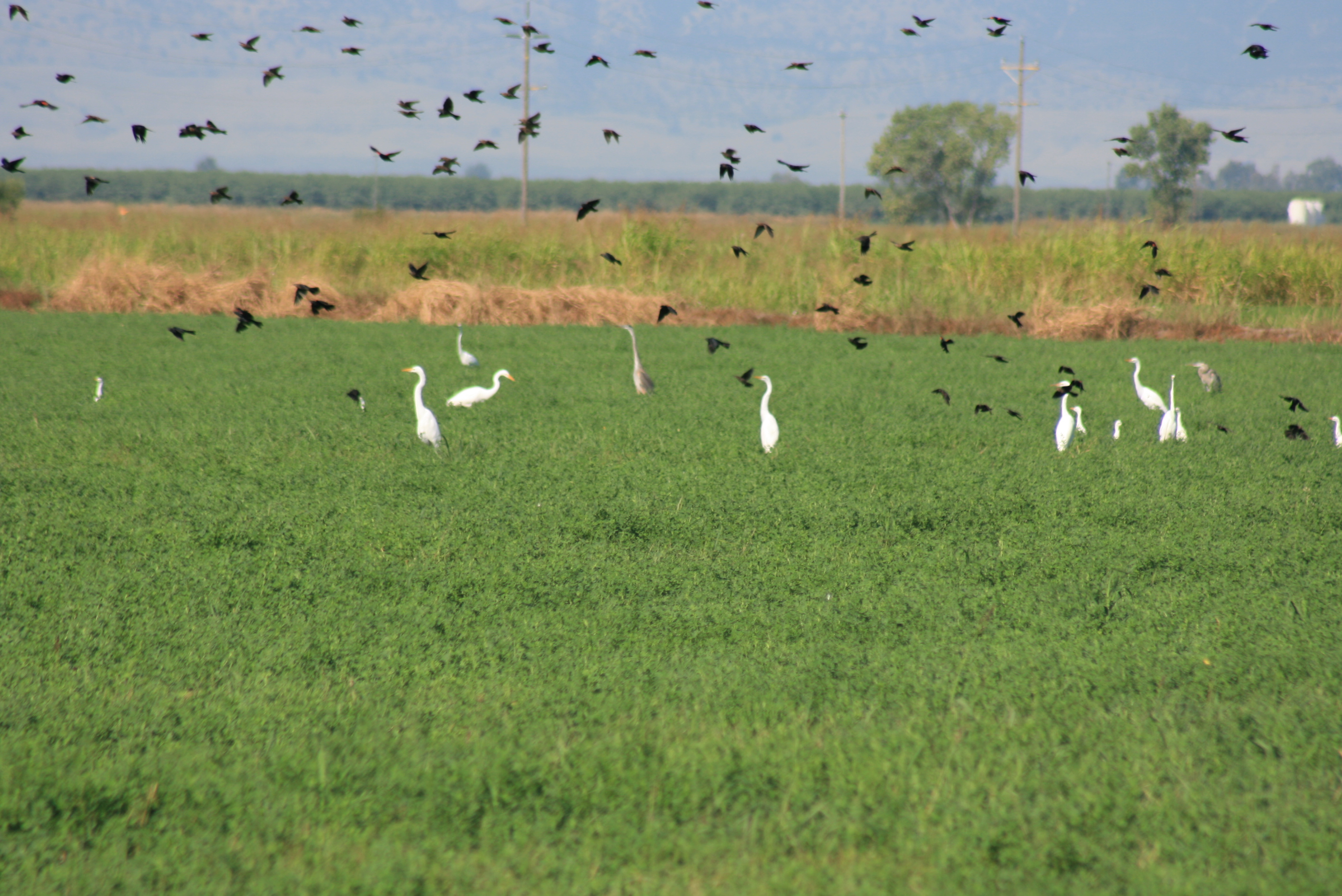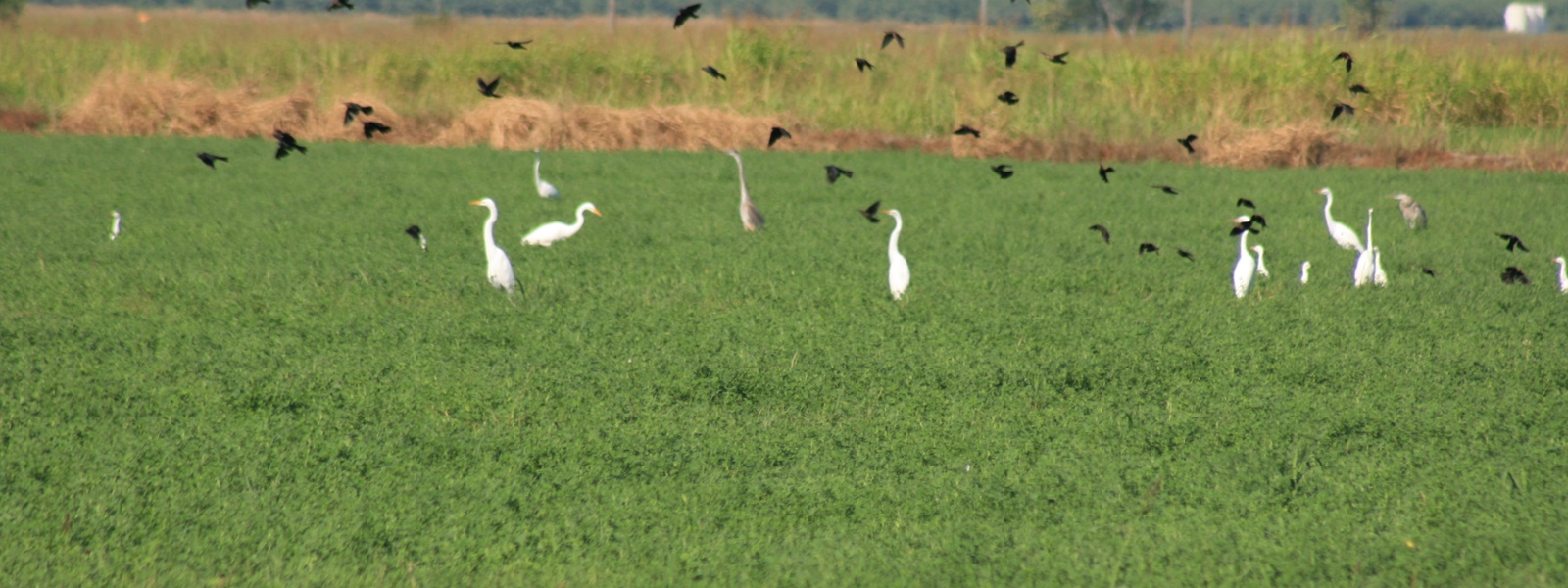Commentary: In defense of alfalfa: Important crop gets a bad rap


Egrets and other birds visit an alfalfa field in Yolo County. Despite the crop’s importance to wildlife and dairy and beef production, it is often a target of water critics.

By Mike Wade
California is the most populous state in the nation and the nation’s biggest agricultural producer. That combination can occasionally lead to misunderstandings between consumers in cities and suburbs and growers in farming communities.
That extends to public perceptions about decisions farmers make to grow crops such as alfalfa. The crop is an important part of our food chain that most of us depend on every day. But very few people understand that.
The Family Farm Alliance and the California Farm Water Coalition, which is supported by the California Farm Bureau, have set out to educate the public about why farmers grow the crops that they do. We see it all the time when water supplies are scarce. Critics emerge, confident that they know how the state should manage water resources and what crops farmers should and shouldn’t be growing.
In 2015, during the last drought, almonds were the target. At other times, it may have been rice or cotton. Whatever the case, public criticism of agricultural irrigation practices is often based on a lack of understanding about why farmers do what they do.
In response to recent criticism of alfalfa, the Family Farm Alliance and California Farm Water Coalition co-authored a white paper to educate consumers, media professionals and members of the Legislature on the important role alfalfa plays in our lives. Educating consumers and others with fact-based information is essential if we expect their support for domestic food production in the future.
Titled “Our Food Supply at Risk: the Importance of Alfalfa Production in the American West,” the white paper helped open a dialogue about crop production and the connection every American consumer has with the American farmer. The report was recently distributed to 1,000 attendees at the Colorado River Water Users Association conference in Las Vegas, as well as elected officials, policymakers, and state and federal agency staff in 17 Western states. It may be found at familyfarmalliance.org/wp-content/uploads/2022/11 /Alfalfa-Report-FINAL-111522.pdf.
Alfalfa is grown in many parts of California. It ranks third in the U.S. in terms of production value. California is also the No. 1 dairy state in the nation, meaning there is a local market for alfalfa, reducing the environmental impacts from trucking it in from other states. Because California alfalfa production is so efficient, it takes roughly 2 acres in most other states to replace the production of 1 acre here at home.
Alfalfa, once again, became a high-profile target last summer after the Commissioner of the Bureau of Reclamation, Camille Calimlim Toutin, called on water users across the Colorado River Basin to take actions to prevent Lake Powell and Lake Mead from falling to critically low elevations that would threaten water deliveries and power production.
Immediately following her testimony at a June 14 U.S. Senate hearing, the general manager of the Southern Nevada Water Authority summarized impressive urban efforts to reduce per-capita water use. He then took issue with many farmers using Colorado River water to grow alfalfa, suggesting that “they carefully consider crop selection to optimize irrigation efficiency.”
What was missing was an understanding or acknowledgment of why farmers grow alfalfa. It is critical to domestic food production, and it’s what allows livestock to produce the variety of dairy and beef products we buy at grocery stores. Whether it is hamburgers, steak, cheese, yogurt or ice cream, alfalfa is key.
Alfalfa is also good for the environment. Alfalfa fields are the beginning of a food chain for a host of wildlife. The fields attract insects and songbirds, as well as gophers, ground squirrels and other rodents that thrive because alfalfa is a perennial crop that remains intact for several years. All this activity helps support a population of predators, including hawks, raptors and foxes. Alfalfa fields also support beneficial insects that help control harmful pests.
Alfalfa is also a global trade crop. Despite unfounded criticisms over exporting “virtual water,” alfalfa helps keep agricultural trade balanced. In 2019, for the first time in 50 years, U.S. agriculture ran a trade deficit, meaning we imported more farm products than we exported. The high export demand for alfalfa boosts our overall agricultural economy.
Editorial boards, academics, water managers from other states and others suggest that alfalfa production is just “animal feed,” or that it should be abandoned in favor of other “higher-value” crops or ones that use less water. We want to remind them that we all depend on alfalfa as the basis for much of California’s food production. It is also water efficient, and it supports the local economies of rural communities throughout the West.
(Mike Wade is executive director of the California Farm Water Coalition. He may be contacted at mwade@farmwater.org.)




